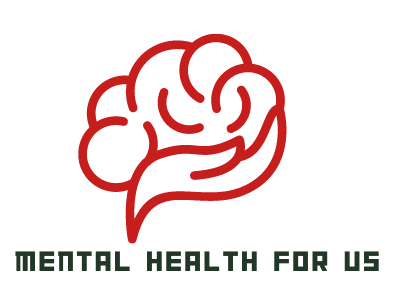Introduction
Finding which therapy is best for me is essential for meeting individual needs and improving mental health. The wide range of therapy methods makes it important to choose one that addresses your concerns and goals. Psychodynamic, behavioral, humanistic, and art therapies are available in mental health. It addresses different mental health conditions and life challenges with its own focus and methods. Equally important is choosing the right therapist. A licensed professional with expertise in your issues can help you heal and grow. Find a therapist who understands your needs and uses a therapeutic method that works for you.
Which Therapy is Best for Me?
The best therapy for you depends on several factors. A key factor is your therapeutic preferences. Each person prefers different levels of creativity and structure in therapy. Art therapy or person-centered therapy may help some people express their emotions and experiences through art. Some prefer a structured, goal-oriented approach like cognitive-behavioral therapy or dialectical behavior therapy to work on specific skills and strategies for mental health issues.
Your needs must be considered when choosing a therapy approach. EMDR and trauma-focused cognitive-behavioral therapy may help trauma survivors. Couples and family therapy can help people with relationship issues. Discovering your needs and goals can help you choose the right therapy.
In summary, therapy is not one-size-fits-all. Your therapeutic preferences, such as creativity, structure, trauma, and relationship issues, must be considered. You can choose the right therapy by researching art therapy, cognitive-behavioral therapy, EMDR, and couples therapy.
An Overview of the Most Popular Therapy Methods
There are many mental health therapies to address various issues and improve well-being. Psychodynamic therapy, CBT, humanistic therapy, somatic therapy, and eclectic therapy are popular.
Understanding the different types of therapy allows people to choose the best one for them.
DBT
Dialectical Behavior Therapy (DBT) helps people manage their emotions, improve relationships, and learn mindfulness. A dialectical philosophy and cognitive-behavioral therapy (CBT) are used in this comprehensive treatment.
Validation, acceptance, and change-oriented strategies distinguish DBT from CBT. DBT helps people balance acceptance and change despite intense emotions and conflicting thoughts. DBT helps people manage and change negative emotions and behaviors by developing emotional regulation, distress tolerance, interpersonal effectiveness, and mindfulness skills.
This therapy is effective for treating borderline personality disorder, chronic suicidal ideation, PTSD, substance use disorders, and eating disorders. DBT improves quality of life, coping skills, and self-destructive behavior.
DBT may be right for you if you need help managing your emotions, improving your relationships, or finding balance. It with a licensed professional can help you manage difficult emotions, improve your interpersonal skills, and develop mindfulness for a happier life.
EMDR
Eye Movement Desensitization and Reprocessing (EMDR) therapy is an effective trauma treatment. It uses eye movements, auditory tones, or tactile sensations to stimulate the brain’s neural network while processing painful memories.
During EMDR, the patient focuses on a traumatic event or memory while the therapist uses eye movements or bilateral stimulation. This process reprocesses and integrates memory to reduce emotional intensity and negative beliefs. EMDR stimulates the brain’s neural network to aid natural healing and adaptability.
EMDR is effective in treating PTSD, phobias, anxiety, depression, OCD, chronic pain, and addictions. It is thought to help people safely process traumatic memories, reducing symptoms and improving well-being.
The benefits of EMDR are many. It relieves trauma symptoms and helps people understand past events. EMDR helps with emotional healing, self-awareness, and growth. EMDR helps people make positive changes and move forward with resilience and strength by addressing the root cause.
Finally, EMDR therapy offers a unique and effective trauma resolution method. EMDR helps people reprocess distressing memories and find a more adaptive resolution by stimulating the brain’s neural network through eye movements and bilateral stimulation. EMDR can treat many conditions, allowing people to heal, grow, and improve.
Mindfulness-Based Cognitive Therapy (MBCT)
Mindfulness-Based Cognitive Therapy (MBCT) helps people with recurrent depression and other mental health issues by combining cognitive-behavioral and mindfulness practices.
To help people with multiple depression episodes, MBCT was created. They gain effective tools to prevent relapse, improve emotional well-being, and mental health.
MBCT emphasises present-moment awareness and non-judgment of thoughts and feelings. Mindfulness meditation and breathwork help people observe their thoughts without getting caught up in them. Increased awareness helps people recognize negative thought patterns linked to depression and other mental health issues.
MBCT challenges negative automatic thoughts and replaces them with positive, adaptive thinking using cognitive-behavioral techniques. It helps build resilience and develop effective coping strategies for stressful situations and emotions.
MBCT has been shown to reduce depressive relapse, improve mood, and boost well-being. MBCT reduces depression and improves emotional regulation.
In conclusion, Mindfulness-Based Cognitive Therapy (MBCT) helps people with recurrent depression and other mental health issues. MBCT promotes emotional well-being and prevents relapse by combining cognitive-behavioral techniques with mindfulness and breathwork to increase awareness of the present moment and change thought patterns.
Psychoanalysis
Psychoanalysis seeks to understand unconscious thoughts and childhood emotions. Sigmund Freud’s therapy is based on the idea that early life events shape current problems.
Psychoanalytic therapy lasts months to years. The duration creates a safe, non-judgmental space where people can openly discuss their emotions and learn how past experiences affect their mental and emotional health.
Psychoanalysis involves working with a therapist to understand their thoughts, feelings, and actions. This investigation often examines childhood memories, dreams, and unconscious desires. By bringing unconscious thoughts and experiences into consciousness, people can better understand themselves and their thinking and relationships.
For deep personal growth, psychoanalytic therapy can be very helpful. It allows a person to explore their psyche and address long-standing issues that may have been affecting their daily life. Psychoanalysis illuminates the unconscious, helping people make lasting changes and improve their self-awareness and well-being.
Psychodynamic Therapy
Psychodynamic therapy acknowledges that childhood experiences and unconscious thoughts shape present-day thoughts, behavior, and relationships. It explores the subconscious to find the causes of emotional and psychological issues.
Psychodynamic therapy lets patients address past issues in one-on-one sessions with a therapist. This therapy brings the unconscious mind to the surface, revealing hidden emotions, beliefs, and behavior patterns that may affect their daily lives.
Understanding these underlying issues helps people understand how childhood experiences have shaped their thoughts, feelings, and behaviors. With this new awareness, they can make positive changes and develop healthier coping mechanisms.
Psychodynamic therapy allows people to openly explore their emotions and understand themselves in a nonjudgmental environment. Long-term therapy allows for a thorough exploration of the underlying issues that may have caused their current struggles.
Psychodynamic therapy helps people discover the unconscious thoughts and experiences that have shaped their lives, fostering self-awareness, growth, and healing.
Where to find the right therapist for me
You can find the right therapist using several methods and resources. Ask friends and family for recommendations. They may have positive mental health professional experiences and offer insights.
Call your insurance company to find network therapists. They can list covered providers to help you choose.
Additionally, searching online therapy databases is convenient. Finding a suitable therapist is easier with these databases’ location, specialty, and insurance coverage filters.
Universities are another option. Many universities have public counseling centers or can recommend local therapists.
Online and offline therapy networks are useful too. This network connects people with licensed therapists and offers many options.
Consider seeing a mental health professional to determine the best treatment for you. This evaluation can help you understand your mental health issues and choose the best treatment.
Finally, talk to your therapist about your goals and preferences. Find a therapist who fits your needs because each has a unique style. Meet with several therapists to find the right one. These methods and resources can help you find the right mental health therapist.
Conclusion
Which therapy is best for me? In conclusion, needs, preferences, and concerns determine the best therapy for an individual. CBT, psychodynamic, dialectical behavior, and other therapies address various issues. Work with a mental health professional to assess your situation and choose a therapy that fits your goals and comfort level. Maintaining regular contact with your therapist can help customize your therapy for maximum effectiveness.
It outcomes and experience depend on the therapy method used. By learning about these methods and choosing a therapist who matches your goals, you can maximize your therapy journey and achieve positive, transformative results.
FAQs
How do I know I should go to therapy?
Experiencing persistent emotional distress, relationship issues, major life changes, or daily life challenges? Consider therapy. Therapy can help you cope if your thoughts, emotions, or behaviors negatively affect your health.
How do I choose which therapy to use?
Select a therapy that suits you. Consider your concerns, It goals, and comfort with different approaches. Consulting a mental health professional can help tailor therapy to your needs and ensure efficacy.
Do I need therapy or am I overreacting?
It is needed only if your thoughts, emotions, or behaviors are affecting your health, relationships, or daily life. Recognizing and addressing your concerns can improve your mental health without overreacting. It supports exploring and managing these issues.







